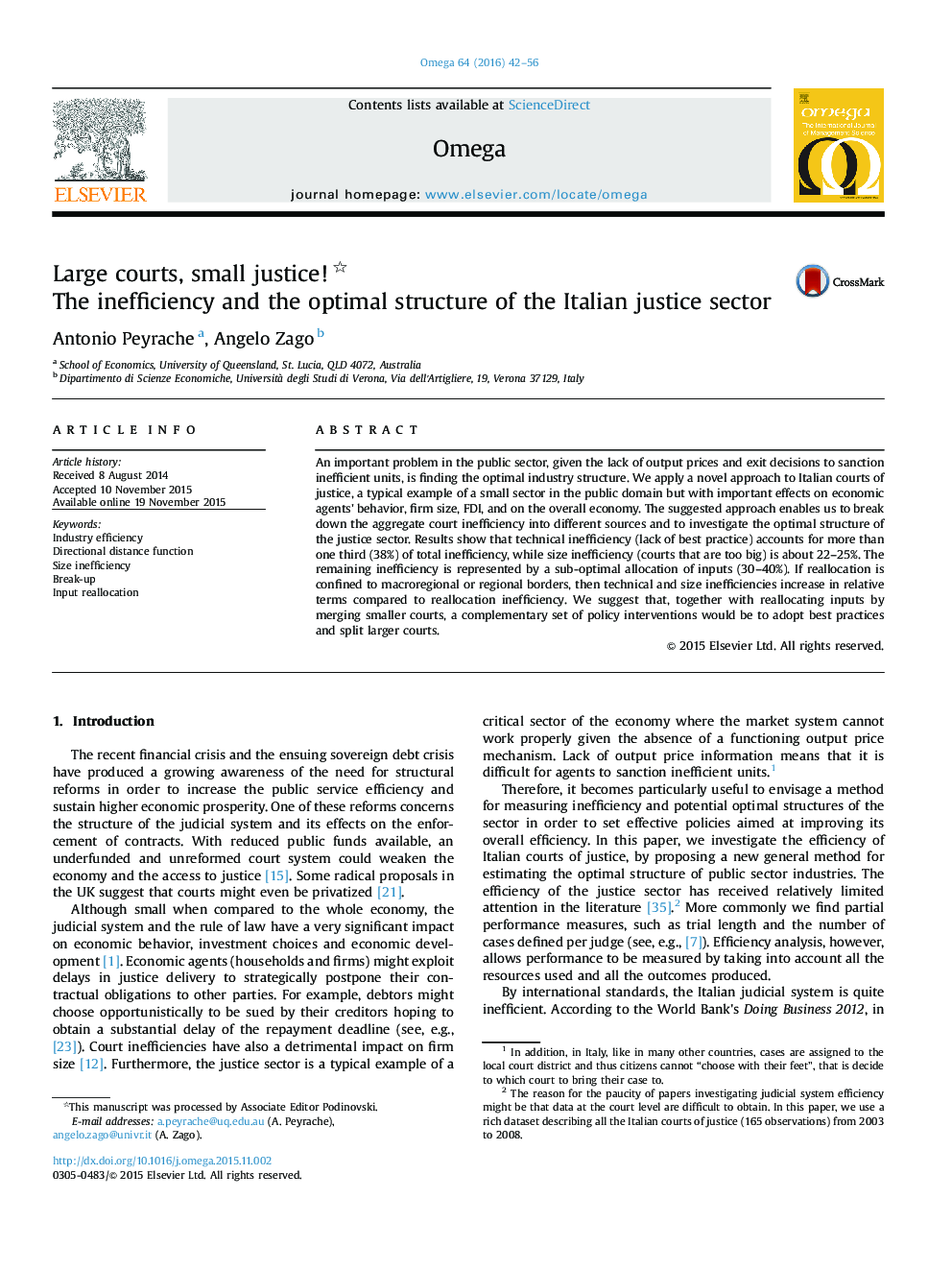| Article ID | Journal | Published Year | Pages | File Type |
|---|---|---|---|---|
| 1032353 | Omega | 2016 | 15 Pages |
•We analyze the efficiency of Italian courts of justice over the period 2003–2008.•We suggest a methodology to measure industry aggregate inefficiencies.•Technical inefficiency is about 40% of industry total inefficiency.•Size inefficiency (courts too large) is 25%, reallocation inefficiency about 35%.•Best practice adoption, input reallocation, court break-ups can increase efficiency.
An important problem in the public sector, given the lack of output prices and exit decisions to sanction inefficient units, is finding the optimal industry structure. We apply a novel approach to Italian courts of justice, a typical example of a small sector in the public domain but with important effects on economic agents׳ behavior, firm size, FDI, and on the overall economy. The suggested approach enables us to break down the aggregate court inefficiency into different sources and to investigate the optimal structure of the justice sector. Results show that technical inefficiency (lack of best practice) accounts for more than one third (38%) of total inefficiency, while size inefficiency (courts that are too big) is about 22–25%. The remaining inefficiency is represented by a sub-optimal allocation of inputs (30–40%). If reallocation is confined to macroregional or regional borders, then technical and size inefficiencies increase in relative terms compared to reallocation inefficiency. We suggest that, together with reallocating inputs by merging smaller courts, a complementary set of policy interventions would be to adopt best practices and split larger courts.
